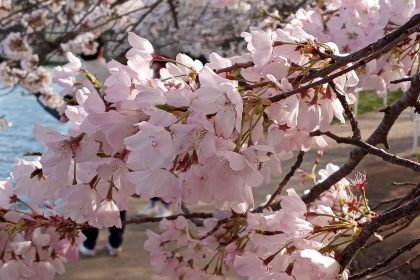Analysts Blame Farm Runoff for Toxic Algae Blooms

WASHINGTON — Americans starting to think about spring and summer vacations as the weather warms may find their favorite water destinations unsafe for swimming. Thick layers of cyanobacteria — commonly known as blue-green algae — have closed popular local lakes in recent years, and Florida has been dealing with recurring “red tide” that reappeared as early as February this year.
Algae inhabit all bodies of water, usually existing in unnoticed amounts. But under the right conditions, such as heavy rains with rising temperatures, or with assistance from farm-industry nutrient runoff, these organisms experience rapid growth or “algal bloom” that can cause major problems for humans, pets and marine wildlife.
An overabundance of algae can block sunlight and keep fish from receiving necessary oxygen in the water. And some of these algae are toxic and can kill fish and make humans sick, either through contaminated air, direct contact or ingesting fouled fish and shellfish.
But these harmful algae aren’t relegated to swimming spots. Toxic algae are now to be found polluting drinking systems and other water systems around the world. And this algae explosion is only expected to be exacerbated by warming waters due to climate change.
Keith Schneider, senior editor for Circle of Blue, started following algae blooms in Lake Erie around 2014, and since has noticed the phenomenon happening worldwide.
“There are several databases that track harmful algae bloom, all of which show the number of these blooms is growing worldwide,” Schneider told The Wilson Center, a D.C.-based research organization, as he shared insights from a 6-part series into the drivers of Lake Erie’s toxic algae blooms.
“The cause is animal agriculture,” Schneider insisted. “The rise of toxic algae blooms coincides with a steep increase in livestock production.”
But he says that the United States is unwilling to do what it takes to stop this ecological threat, which, in his opinion, would be to impose phosphorus regulation on the farming industry.
“What are we willing to do as a society?” he asked. “I can tell you we’re not willing to do much more. We study it … but there is no sufficient authority to regulate discharge,” and the commercial farm industry is “really influential.”
“Big livestock operations have nutrient management plans, but essentially, they are irrelevant to what is happening,” Schneider said.
“[The farming industry is] trusted as a special class of polluters … allowed to spread so much to produce crops,” he said.
While he didn’t put the blame on smaller livestock producers, he argued that fertilizer and manure spreading was being done — and allowed — on fields that don’t need it. The result, he said, is fecal contamination, or too much phosphorus and nitrogen being run off into groundwater.
Analysts use satellite imagery to assess bloom size and severity and have linked phosphorus loads to algae bloom intensity.
“When it rains a lot, we have a lot of flow. We have a lot of load,” Laura Johnson, director at the National Center for Water Quality Research, explained.
Simply applying less fertilizer is a first step to reducing the nutrients available for algae growth, but she explained that this wouldn’t be a quick fix.
“Once phosphorus is applied it hangs around for a bit,” she said. “Really wet years have loss no matter what, even if less phosphorus is applied … So we’d need more time to make changes.”
She acknowledged that using less fertilizer is a “scary thing to do for a farmer” who is dependent on ever-increasing crop yields. In lieu of curbing all phosphorus use, Johnson suggested that subsurface fertilizer application, field-edge phosphorus traps, or the introduction of new wetlands to hold water and filter nutrients could be options to reduce runoff.
However, she admitted, “it’s unlikely we’d be able to put in enough wetlands to totally fix our problems here.”
Promoting and subsidizing climate-smart agriculture options may be an effective response — eventually — to solve the growing threat of algae blooms affecting water supplies and ecological stability, and harming some of the most biodiverse places on the planet. But some analysts are still pushing for regulation to ensure a sustainable phosphorus future.
“We can solve this by mandating controls on agriculture run-off,” Schneider said. “I don’t want to put farmers in a corner, but … we’ve got to shrink what they’re allowed to do.”
Kate can be reached at [email protected]

























